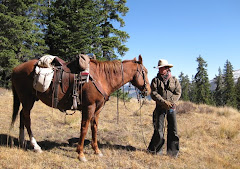
Hello friends and readers.
I’m not “back.” In fact, I never left. But that’s another story I have no intention of boring you with at this point. What brought me out of my hibernation was a story I wanted to share with you coming from a new friend in Germany. Tom Muller and his wife live in the German Alps with their horses, hounds and goats in what seems like a place as remote and beautiful as where my family and I are living. Funny how something so far away can seem so close…
Anyway, Tom wrote recently and briefly shared with me his personal experiences working with barefoot horses. I was fascinated – and hooked – and asked him if he wouldn’t mind writing his story to share with you. I believe many of you (Rio in BC for starters!) will find his story as interesting – and informative – as I did.
The first part of his story follows. Thank you, Tom, for sharing this with us! We look forward to reading more.
Going Barefoot, by Tom Muller
Also noted as the use of unshod horses by the former Mounted Anti Poaching Unit in Namibia.
The Mounted Anti Poaching Unit of the Department of Nature Conservation in former South-West-Africa used the horses mobility and bush savvy of both horse and trooper to combat Elephant and Rhino poaching in the North of the war torn country in the 1980’s. Traditionally mounted patrols were always conducted by the game rangers of the Etosha National Park, the former Chief Ranger being the commanding officer of the South African Defense Forces Mounted Infantry Unit. A special unit was formed to combat organized poaching.
The terrain the unit operated in was mainly flat Savanna, with mountains in the West. Sandy plains often covered with lots of small rocks reached to the steep mountains. The rainy season (summer) was very hot and humid with temperatures above the 40°C mark, while during the dry season (winter) daytime temperatures would climb to a pleasant 30°C while the nights could bring frost and temperatures well below 0°C. The altitude was well over 1000 meters above sea level.
The duration of horse patrols could vary from one to six weeks. The longest patrol lasted 12 weeks. MAPU did control areas with high concentrations of game, would conduct follow up operations, control local villages, gather intelligence and conduct combined operations with the Army and Police. Depending on the type of ops conducted, the horses would be on the move for 6 to 12 hours a day, with troopers mounted and leading their horses alternately. Weight was kept at a minimum. The trooper, with a maximum of 15-20 kg’s of equipment including rifle, ammunition, rations, radio, water and pellets for the horse. Modified McClellan saddles were used and found very satisfactory. Snaffle bits and no curb bits were used.
Now comes the most important part. The mounts! Remounts were bought at farms from the Otjiwarongo region. They were mainly Boer horses with a certain amount of Arab blood (the higher the better). They stood about 14 ½ to 15 hands high and were raised on farms with a lot of mountains and rocky ground. When between 4 and 8 years old they came to MAPU and were trained by the unit. Mares and stallions were bought alike, stallions were castrated by the units vet. Horses that were raised like that had certain advantages that were invaluable. They had bush savvy and knew how to deal with predators, poisonous snakes, and changing weather. They knew how to move and negotiate rough country and flooded rivers. They were tough, hardy and reliable. Most important, they did have very tough hooves adapted to the country they were working in. Black hooves were tougher than white hooves, although a fair amount of horses did have white hooves and never went lame. Two horses shared a paddock of half sand and rocks. Keeping them on the same ground they were supposed to work on, was one of the essential things to keep their hooves tough but not brittle. Big Acacia trees gave the necessary shade and shelter. Feed troughs were put on a concrete slab under one of the trees.
That concludes Part 1. We look forward to Tom sharing his next installment with us!
Thank you, Tom.
Please send comments to losttrailranch@gmail.com. All messages referring to this and related articles will be forwarded to Tom.





